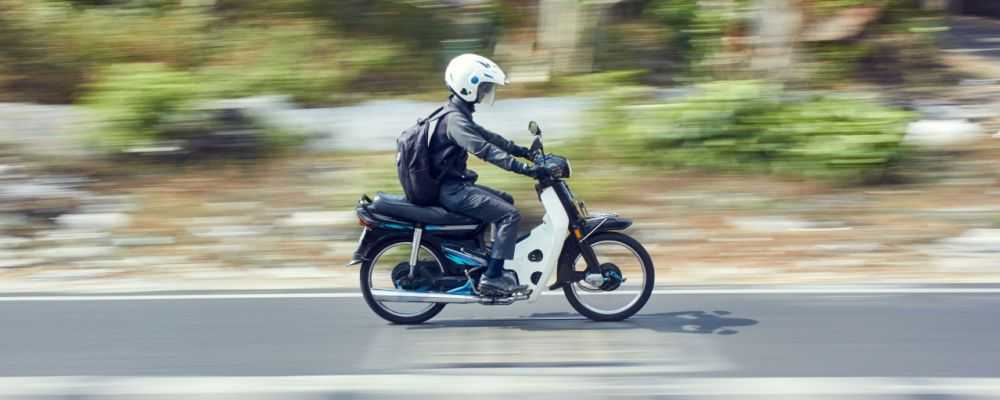Why won’t my moped start?
Picture this. It’s a Monday morning. You were up early getting ready to go to work, you’ve put all your riding gear on to ride in on your moped, you step outside, turn the key in the ignition, press the start button, and for some reason, it doesn’t fire up.
We’ve compiled some of the most common reasons why your moped might not start and how you can diagnose these issues and possibly even fix them.
1. Your Battery Is Dead
The first port of call would be to check if your battery is dead. Given that your moped's battery also powers your lights, horn, and the ignition pack needed to start it, this is relatively simple to check.
To determine whether or not your battery is dead, turn the ignition key to the "on" position, then press the button for the horn and try to use the indicator lights; if neither of these things works, the battery may indeed be completely depleted or just not carry enough charge to complete the start cycle.
Then remove the seat of your moped. Typically, the battery is located underneath the seat, but consult your user manual if you are unsure of where it is. Then, using a multimeter (admittedly, if you have one!), connect the black terminal to the black lead and the red terminal to the red lead and see if the battery is holding a charge. If it isn't, then you will need to replace the battery or charge it using a trickle charger. Sadly though, your journey to work on this day will be by other means.
See how much you can save
Compare quotes from 37 insurers
2. The Spark Plugs Need Changing
If the battery is working and the engine is turning over but not firing, there could be an issue with the spark plug.
The spark plug is what ignites the air and gasoline mixture that is contained within the engine. If the spark plug is not functioning properly, the engine may stutter or it may not start at all.
To check a spark plug, you will need a spark plug wrench to remove it. Once the plug has been located within the engine, remove the ignition wire that connects to the top of the plug, including the end fitting.
Using a spark plug wrench, remove the spark plug from the engine by rotating it anticlockwise, reconnect the wire to the top of the plug that is no longer screwed into the engine, and position the plug so that its lower metal body is in contact with a metallic portion of the cylinder head.
Then, using the handlebar-mounted ignition switch, attempt to start the engine. A blue spark should emanate from the end of the spark plug; if there is no spark, the problem may rest with the spark plug and replacing it could solve your problem.
3. You're Out Of Fuel (or worse, a fuel leak)
A common reason why your moped may not be able to start is that you may not have any fuel in the tank! This can be easily diagnosed by simply rocking the moped from side to side and listening for any fuel moving around in the fuel tank. Silence will suggest you're out of gas, so a lift to the nearest garage and a jerry-can of fuel could solve the problem.
If you suspect there is a fuel leak, check the fuel valve and the carburettor, as these are the two most common places for leaks. If there is a leak, there might be a strong smell of fuel and visible fluid. If these are identified as the problem, it's recommended to change their gaskets, as these can wear down over time. You'll need to get your moped to a mechanic.

4. The Fuses Are Blown
If none of these fixes have worked yet, it may be time to check the fuses to see if any of them have blown. Consult the user manual for your moped to locate the fuse box. With the ignition off, remove each fuse and check the curved metal strip within the fuse; if this strip has been broken, it will need to be replaced.
5. Dirty Carburettor Preventing Oxygen Getting In
The job of a carburettor is to control the mix of air and fuel entering the engine. Over time, this can get dirty and require cleaning to ensure it can continue providing optimum balance. An imbalance can cause the engine to malfunction, including misfiring, bogging down (not responding when opening the accelerator), and generally not performing as well as it should.
If your moped doesn't start and the other suggestions in this article are not the cause, remove the carburettor and clean it thoroughly, including the jets within, as these can get blocked over time.
Hopefully these fixes can help to diagnose any issues or problems you may have with your moped not starting. Most of the fixes require some degree of competence and confidence around a moped engine, so if you feel attempting these fixes is beyond your capability, don't. Consult a qualified moped technician who should be able to get your back out on the open road again soon.

